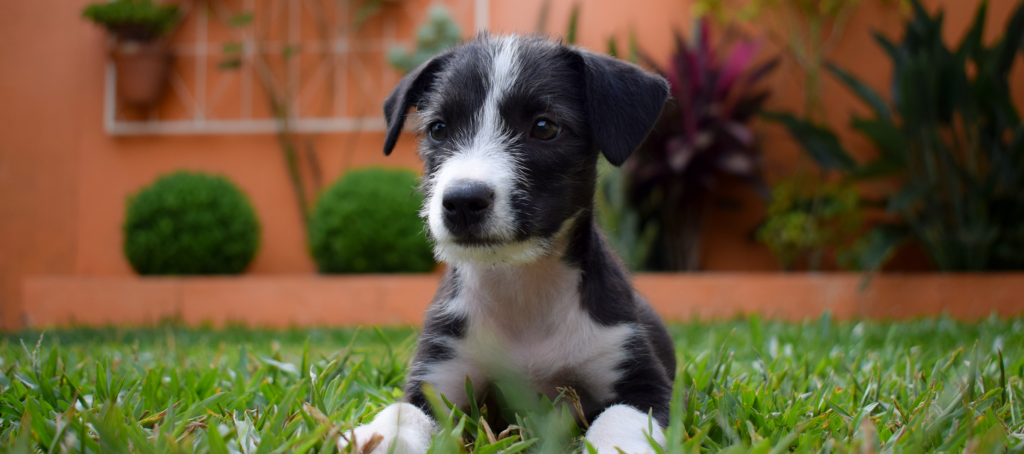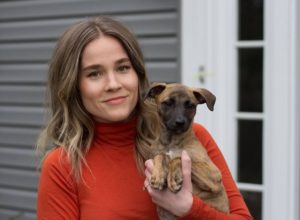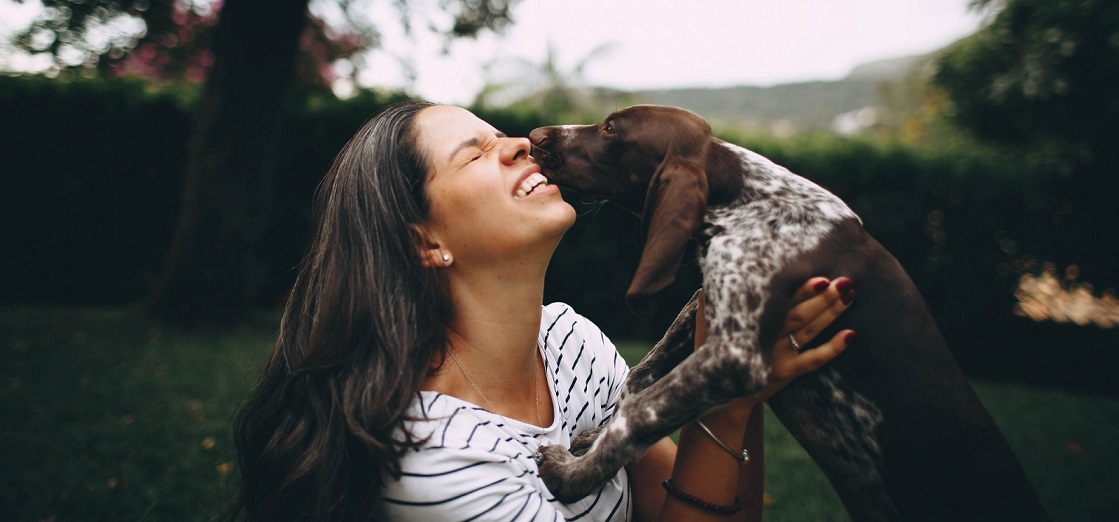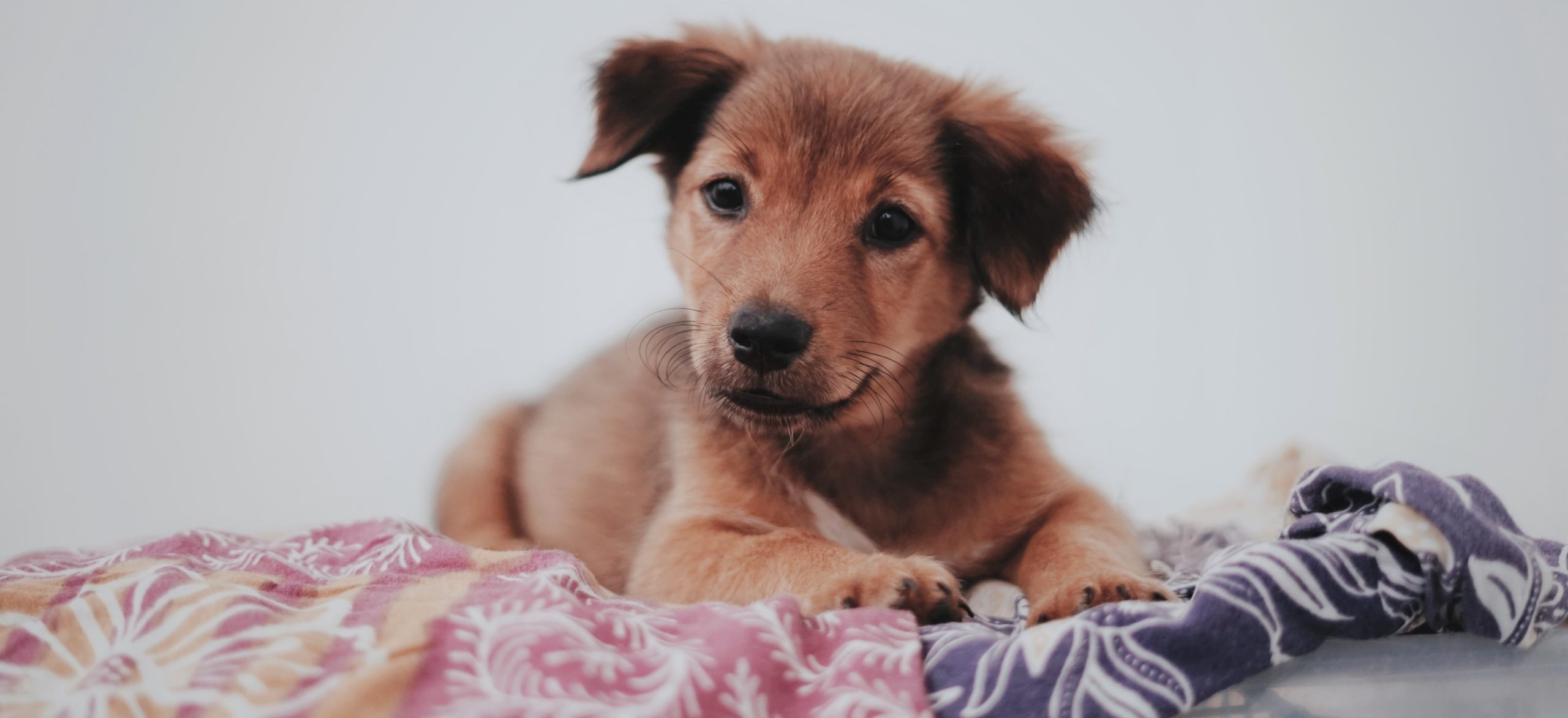You’ve got a puppy (or you’re getting one soon) and you dream of a life full of fun adventures, including weekend getaways, road trips and vacation rental stays. Enjoying an Airbnb or VRBO is just better with the company of your dog, especially when they’re a well-adjusted and polite guest.
Not only is it possible to bring your young puppy along with you to a vacation rental property, but it’s actually an ideal opportunity to prepare them for an active, harmonious lifestyle together. With some planning, you can make an Airbnb stay with your pup a valuable educational opportunity that can help them grow into a confident, well-mannered dog who adds joy, rather than stress, to your travel experience.
In this guide, you’ll learn:
- How a vacation rental stay can help shape your puppy into an awesome adventure pup
- Why you shouldn’t wait until they’re older and more trained to bring them along
- How to choose the right property for an enjoyable, low-stress stay
- Things you can do before you embark on your trip to prepare your puppy
- What to bring with you to help your puppy be comfortable and well-behaved
- And loads of tips and tricks to make a vacation stay easier and pleasant with a puppy
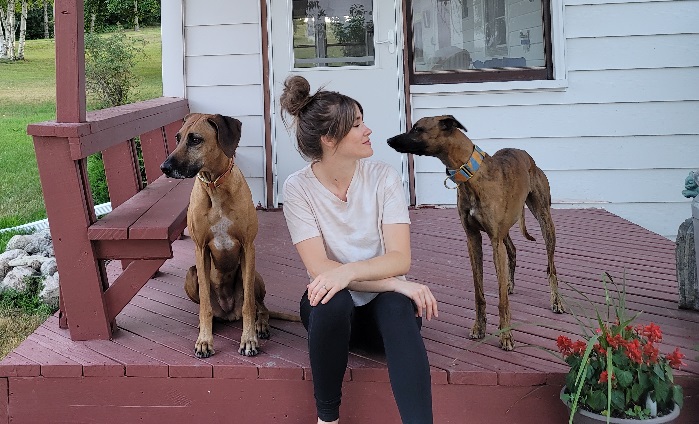
Why You Should Bring Your Puppy Along to a Vacation Rental
While it might seem best to wait until your puppy is older and has more training under their belt before taking them to an Airbnb, I’m here to tell you that just isn’t true. Bring the puppy! Let me explain.
You got your puppy with the hope that they can be your adventure sidekick. Whether it’s roadtripping, exploring the great outdoors, visiting friends and family, or exploring a new town or city, you picture your new companion as an integral part of your active life.
If you’re anything like me, you love scrolling through listings on sites like Airbnb and VRBO, finding the perfect setting for a getaway, and then enjoying some blissful time away from home. Bringing my dogs along for these trips adds so much more fun and joy.
When you bring your puppy along to a vacation rental, you’re providing invaluable experiences that can help prepare them for life as a confident, well-adjusted adventure dog. You’re helping to set them up for success on your future travels and outings, and for life in general from an early age.
It’s all related to something called puppy socialization, which is an often misunderstood term. Let’s take a quick deep dive into what socialization actually is. (Spoiler alert, it’s way more than meeting people and other dogs.)
Socialization 101
Socialization is about exposing your puppy to the big wide world in a way that builds their confidence. The goal is to positively expose a puppy to a wide variety of sights, sounds, surfaces, environments, and experiences that they will encounter as an adult dog. This early exposure helps buffer against potential behavior issues that can develop when a puppy is undersocialized, such as fearfulness, reactivity or overexcitement. Puppies should always be free to check things out at their own pace, without forcing interaction, as this helps them learn novel things aren’t scary and that you’ve got their back.
All this early learning helps your puppy learn how to feel and act in various situations and spaces. We can normalize things from a young age with the goal of fostering a “no big deal” attitude in a puppy. It’s so much easier to live and adventure with a puppy who is confident, adaptable and unbothered than one that is nervous, hesitant or frantic.
What you should expose your puppy to depends on your lifestyle. So if your lifestyle includes fun stays at an Airbnb or VRBO, then bringing your puppy along for a trip provides the perfect socialization opportunity. You can start getting them used to all the ins and outs of this experience so they grow into excellent canine travelers. You’re showing them that this is a normal part of life with you.
How Old Should My Puppy Be? And What About Vaccines?
It’s important to note that socialization is time sensitive. The critical socialization window ends around 16 weeks of age. During this period, puppies are much more open to novelty, so it’s the best time to introduce them to the things they’ll experience as an adult dog. After this age, the brain becomes less plastic, and novelty is more likely to be perceived as scary or threatening. So as a puppy parent, you really want to be taking advantage of this developmental stage to help your puppy feel confident and comfortable.
If you can fit in a trip when your puppy is in this age range, that’s ideal. And if you can’t, it’s not the end of the world. You’ll just want to be positively exposing your puppy to novelty throughout the critical period to set them up for smooth travel experiences in the future. Car rides, visits to new places, being around new people, etc.
If you’re concerned about socializing your puppy before they have all their vaccines, check out the American Veterinary Society of Animal Behavior’s statement on this topic. In it, they express that the positive effects on puppies’ long term behavior and temperament are so important that “it should be the standard of care for puppies to receive such socialization before they are fully vaccinated.”
Showing your puppy to the world and building their confidence is also incredibly rewarding and fun. It’s my absolute favorite part about working with puppies.
Now that I’ve convinced you to bring your puppy along, let’s get into how to make your vacation rental a success for you and your puppy.
Choosing the Right Vacation Rental
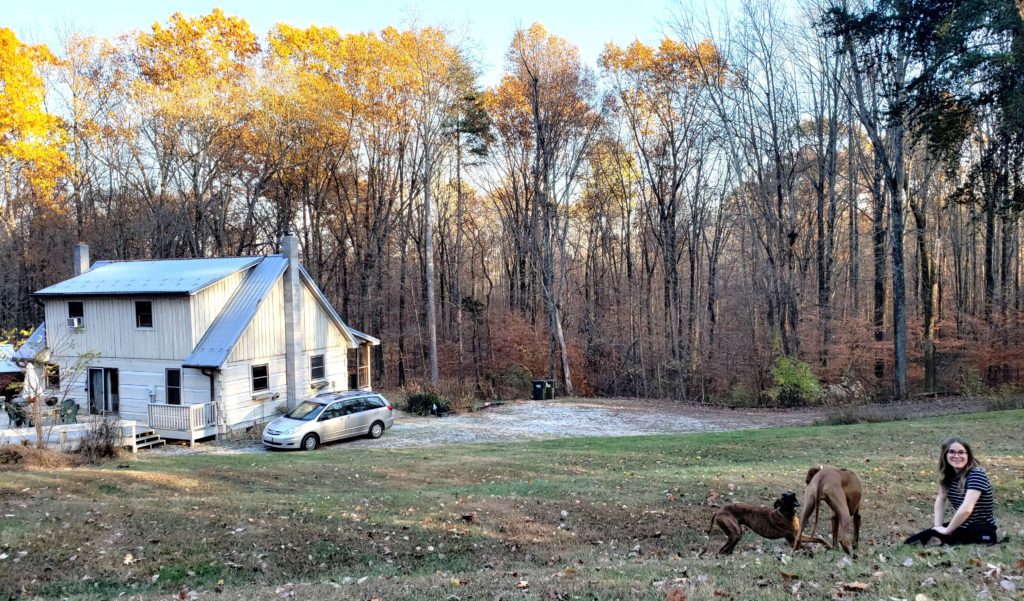
Strategically selecting an Airbnb or VRBO can make the vacation easier and more enjoyable for both you and your puppy. While you may have made your choice based on the aesthetic vibe or proximity to attractions before traveling with a puppy, you’ll now want to consider your pup’s experience and needs.
Of course, you’ll need to make sure that the property allows dogs, but beyond that, here are some key factors to keep in mind when booking a vacation rental with a puppy.
Environment
Consider what environmental factors might make a vacation rental challenging for your puppy, and therefore not as enjoyable for either of you. This can really depend on your individual puppy’s temperament.
For example, an apartment in a pet-friendly building might mean having to pass other dogs in narrow hallways, some of whom may be very excited or reactive. That could potentially be scary or overwhelming for your puppy. For one puppy, staying in a place downtown in the midst of all the hustle and bustle might be no big deal, but for others, it could be very unpleasant. This isn’t to say that you can never stay in a place like this, but it may not be the best choice for your highly impressionable puppy’s early vacation experiences.
Then think about what environmental factors would make it easier and more fun.
Do you want to expose your puppy to water, in hopes that they’ll become a kayaking or paddleboarding companion, or a confident swimmer? Find a place with water access.
If your idea of a true vacation means not cooking three meals a day, but you’re worried about leaving your puppy alone while you go out to eat, see if there are takeout or delivery options available. Sometimes listings will mention this, but you can also message the host to find out.
Personally, I enjoy staying in rentals on large properties where I can spend a lot of time in nature with my dogs. We don’t have to worry about running into other people or dogs while we hike around and explore in a peaceful setting. All that space makes it easy to meet my puppy’s exercise needs, so they’re able to relax indoors. It also gives me a chance to work on my puppy’s off-leash and recall skills. I love being able to walk outside for an outdoor adventure without having to always get in the car. That’s not to say that we don’t check out other trails or see some sights, but this kind of environment is what’s easy and fun for me and my pups.
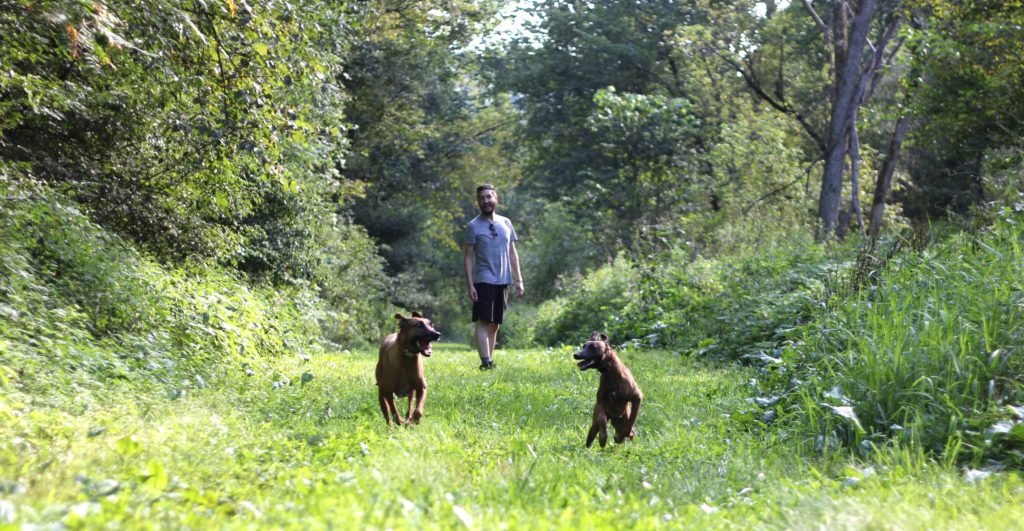
Remember you can always seek out more hustle and bustle if you’re staying in a quiet or secluded rental and want to expose your puppy to some more action. For my puppy’s first Airbnb trip, we stayed in a yurt on a lake with no one else around. We also took him to a coffee shop in the cute downtown, where he saw plenty of people, other dogs, cars, and even a horse-drawn carriage.
But it can be hard to escape the commotion if your rental is in a busy or loud location, which can be really tough if your puppy is struggling in that environment. If you’re unsure how your puppy might do, it’s best to err on the safe side and pick a quieter, more controlled setting with some outings to busier locations to see how they feel about it.
Stairs
Puppies and stairs are not a match made in heaven. If a rental property is not on the first floor, or if there are stairs inside the home, you may want to look elsewhere, or at least, be prepared for a workout.
Your puppy might not understand how to go up and down them, which means they need to be carried. And this can be a real chore depending on their size and your own mobility. Stairs can also make potty breaks, which we’ll talk all about later on, more of a hassle. Lugging a puppy up and down flights of stairs many times a day so they can relieve themselves outside is not my personal idea of a vacation. Additionally, some puppies are quite clumsy or reckless on stairs, and you don’t want them getting injured.
Layout
Look for any potential puppy hazards in the home layout before booking it.
For example, lofts can be super fun, but are usually not the best choice for a puppy. Getting them up and down can be hard, and you don’t want them accidentally falling off the edge to the main floor.
Ease of Puppy-Proofing
As you look through photos of the rental, think about how simple it will be puppy-proof. More tips on that to come, but if the space is artfully cluttered with decor and trinkets, it’s going to be hard to ensure your puppy doesn’t damage anything with their shark teeth. That wall-to-wall floor-to-ceiling bookcase might look so cozy, but it won’t be so fun keeping your little paper shredder away from it at all times.
While you might have to pick up a few things and put them out of reach of your puppy, you don’t want to have to do a full redesign of the space so that you can relax without worrying about what your puppy is going to put in their mouth next.
Setting Yourself & Your Puppy Up For Success
Not Your Puppy’s First Rodeo
Ideally, your puppy will have had some exposure to the big wide world before you take them to an Airbnb or VRBO. You don’t want to overwhelm them with too much new stuff all at once on the trip, so it can help for them to have some prior experiences in your local area.
Here are some key exposures to consider before your trip:
Riding in the car, in a crate or doggy car seat
Visiting new indoor spaces, such as a friend’s house or a store
Exploring new outdoor spaces, such as a trail or park
Observing new people and dogs
Meeting trusted friends and well-known, vaccinated, safe dogs
Honestly, these are experiences all puppies should be having regardless of whether or not their human will be bringing them along on trips, but are especially important if you want a well-adjusted vacation pal.
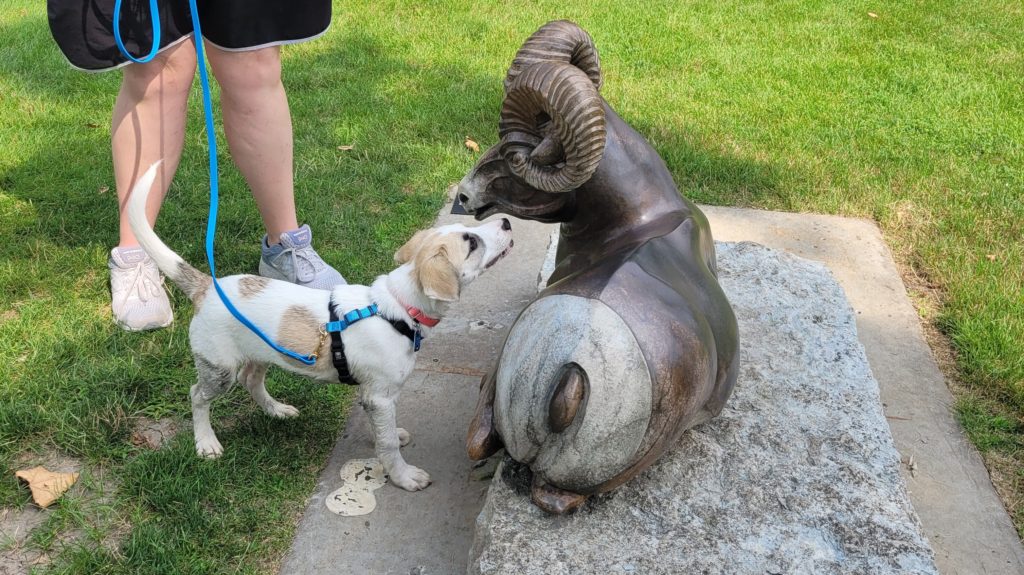
Additionally, you’ll want to acclimate your puppy to spending time in their crate or pen at home before you attempt to confine them in a vacation rental. If the first time you try to crate them or stick them in a pen is in an unfamiliar place, it may not go so well. Work on their confinement skills at home, so you can take them along with you on vacation. They don’t need to be fully crate trained, but they should have some crate or pen experience.
Destination
For your puppy’s first trip or two, it can be convenient to choose a location that’s not too far of a drive from your home. That way you can see how they do with the car ride before committing to a longer trek in the future. Within one to three hours away is a nice first foray into car travel.
You could also do a daytrip to see how your puppy does riding in the car for more than a few minutes. Then you can base your destination on how they handled the daytrip.
Supplies
You can minimize your stress and promote good puppy behavior by having the right supplies on hand. Here are the essentials you’ll need when staying at a vacation rental with a puppy.
Food
If your puppy eats kibble, you can measure out the amount they’ll need for the duration of your stay to save space, rather than packing the whole bag of food. If you feed raw or cooked food, you’ll need to keep the meals chilled or frozen. I like to use a separate cooler filled with ice packs for my dogs’ meals.
Food & Water Bowls
Most vacation rentals don’t provide bowls for your pup’s food and water, so make sure you pack those. Bring a collapsible water bowl to bring along on any outings so your pup can stay hydrated.
Treats
Staying at a vacation rental provides so many learning opportunities for your puppy. You’ll want to be ready to reward your puppy for behaviors you like, as well as practice skills they’ve learned at home.
Bring a variety of small, yummy treats and a lot of them. If your pup has a sensitive tummy, avoid trying out new treats, as they might upset their digestive system and you don’t want to be dealing with a poop explosion on your vacation. Some of my favorites are Ziwi Peak, Vital Essentials Mini Nibs and Only Naturals Max Meat.
Treat Pouch
Keep your treats in a pouch worn around your waist or clipped to your waistband so you’re always prepared to reward your puppy, whether you’re hanging out around the home, on a walk, or out on the town. My favorite is the Doggone Good Rapid Rewards Pouch.
Crates, Pens & Gates
I know packing these things can be a hassle, as they’re bulky, but they’ll make vacationing with a puppy so much easier.
Puppies need to be supervised and managed, or else they will inevitably do things you don’t like. Limiting their access around the rental means you can keep your eyes on them and prevent unwanted behavior. This is especially important because this isn’t your home, and you don’t want to be responsible for damages.
Additionally, you don’t want your puppy to learn that when they’re away from home, anything (like peeing on rugs or chewing furniture) goes. These tools will help you shape appropriate vacation manners in your puppy from an early age.
Puppies also need sleep, and if given total freedom, they might choose to go and go and go. And an overtired puppy is often a cranky, wild, out-of-control puppy. Utilizing their crate or pen for naps will save your sanity.
I suggest using the same tools you use at home for consistency.
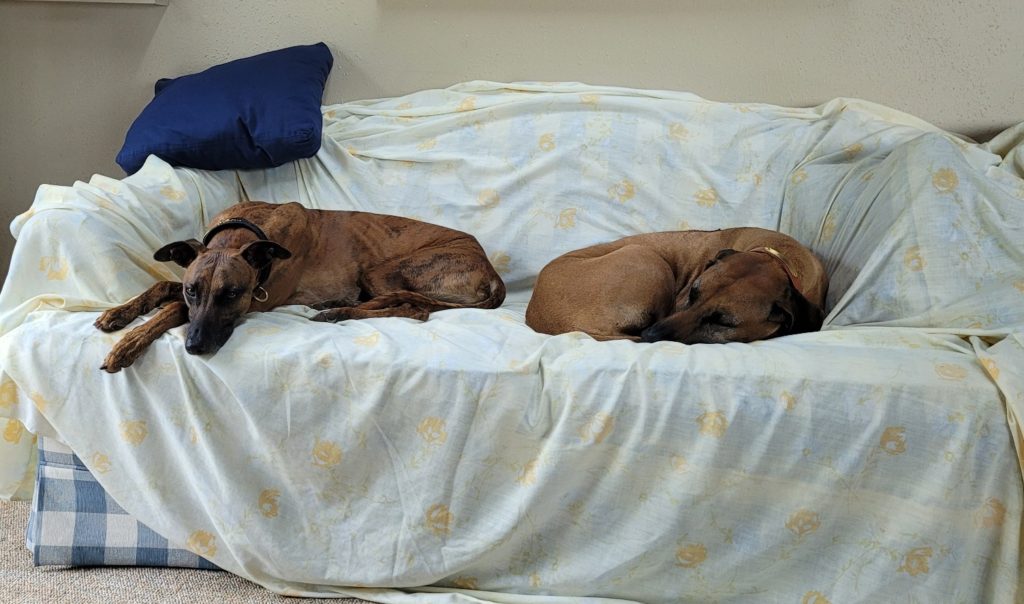
Bedding
Bring along your pup’s favorite beds and blankets, so they can be nice and comfy on vacation.
I like to bring some old bed sheets to cover furniture. Some rentals provide these, but it can’t hurt to have your own just in case. I also toss in a couple towels, to wipe paws at the door or dry the puppy off if they went for a swim in the lake.
Enzymatic Cleaner
Even though you’re going to be on top of your puppy’s potty training, an accident might happen and you’ll want to be ready to thoroughly clean it up. Pack an enzymatic cleaner like Nature’s Miracle and some paper towels.
Toys
You don’t need to bring your puppy’s full inventory of toys, but bring a few for them to play with. I like to have some interactive food toys at the ready, which can keep a puppy busy and entertained, while also burning energy. The Planet Dog Snoop and snuffle mat are among my favorites.
Chews
Get a selection of enticing chews that your puppy will love to work on while at the vacation home. This will help keep their teeth off of furniture and rugs, as you’ll have something interesting to redirect them to. Additionally, if you have a bad weather day, a yummy long-lasting chew will be your MVP. Some of my favorites are bully sticks, beef tendons and beef cheek rolls. I also love West Paw Toppls, which you can stuff with any moist food and freeze.
Collar, Harness, & Outerwear
I highly recommend getting your puppy used to whatever collar or harness they’ll be wearing on your trip beforehand. Same for any jackets or coats, if you’re like me and have dogs that get cold easily. Make sure there is an ID tag on whatever gear they’ll be wearing, just in case.
Leashes
Always bring more than one leash, in case one breaks or malfunctions. I like to have a variety of lengths, depending on what I’m doing with my puppy. Ten and twenty foot biothane leashes are my most used lengths for puppies.
Additionally, I like to let my puppies drag around a lightweight 6 foot nylon leash (⅜ inch is my preferred width), so I can easily wrangle them without manhandling or chasing if needed. The leash makes it easy to quickly but gently redirect them away from chewing, digging, or jumping. Simply pick up or step on the leash, instead of grabbing, yelling, or chasing your pup. This is something I recommend all my clients use at home, so it’s a no-brainer to use it on vacation too.
Poop Bags
Gotta scoop the poop!
Puppy Proof the Space
Before your puppy is allowed to check out their home away from home, take some time to puppy-proof the space. Even if your puppy has been doing well with keeping their teeth off your stuff and aren’t having accidents at your home, it’s a good idea to scout out potential puppy hazards since this isn’t your place.
It can help to snap a few photos quickly before you rearrange anything, so you can remember where to put stuff when it’s time to check out. While you’re puppy-proofing, your puppy can wait in the car, or if you’re with other people, they can walk the puppy around outside until the coast is clear.

Potty Training at a Vacation Rental
Housetraining a puppy might be the furthest thing from your mind when you think of your ideal vacation. But, alas, here you are. You’ll want to stay dedicated to ensuring all your puppy’s potties happen outside. Firstly because it’s not your house, and secondly, because you want your puppy to understand that potties only happen outdoors no matter where they are. Staying at a vacation rental is a great way to help your puppy understand this lesson.
While this article isn’t about potty training, here are several tips to help you stay on track with house training while on your trip.
Pick a Potty Spot
Choose a spot that you’ll take your puppy to potty every time. If you take your puppy to various spots to do their business, they can become easily distracted by the new smells and sights. The smell of their previous potties will also encourage them to go.
Stick to a Schedule
Vacation is often a time for spontaneity and shedding your normal routine, but when it comes to potty training, you’ll need to keep to a schedule. Take your puppy to potty at all the usual times: when they wake up, after eating and drinking, during/after playtime, and any time they show signs of needing to go such as sniffing the ground or circling. Depending on the age and training of your puppy, they may need breaks every 30 minutes to 2 hours. Err on the side of more frequent at a new location. Set a timer if you need to.
Remember that this environment is completely new to your puppy. Even if they were signaling that they need to go out at home by sitting or whining at the door, they will likely squat and go at a vacation rental because they don’t understand how things work here. Instead of waiting for them to tell you, take them out frequently.
Supervision & Confinement
Puppies in potty training need to be supervised or they might have an accident behind your back. This is where having crates, pens or gates is so helpful.
If you take your puppy out and they don’t potty, don’t let them loose in the rental or else they might find a nice corner to go in three minutes later. Instead, you can put them in their crate, in the pen (if they don’t potty in there) or clip on a leash and keep them right next to you so you can watch them like a hawk. Give another potty break a few minutes later.
Only after they’ve gone do they get some “free time.” Though you still need to be supervising them so they don’t get into other trouble.
Puppy Crating at Vacation Rentals

Vacations provide a great way to practice crating in a location away from home, which is a valuable skill for any canine adventure sidekick. However, you want to make sure that you aren’t pushing it too far, creating negative crating experiences that can setback your training.
It’s normal to see some regression of behavior in a new environment so you might need to adjust your expectations. Your puppy may be able to be home alone in their crate for three hours at home, but don’t automatically expect that they can do the same on your vacation. They may need you to hang out near their crate to help them settle in for a snooze at first. Be willing to adapt to their needs so they aren’t stressed out.
If you’re worried your puppy might vocalize for more than a couple minutes or will become highly distressed, if you crate them and leave, it’s best to avoid putting them in that situation. Vacation isn’t the time to be pushing them beyond what they can handle. You want to be giving them positive experiences in the crate away from home only.
This might mean changing up your plans so that your puppy isn’t left home alone for periods longer they can handle, or possibly at all if they aren’t ready for it. While this can be inconvenient, remember that your puppy’s early experiences shape their future behavior. It’s worth accommodating to where they’re at with their crate training now, so that you don’t have an adult dog who hates their crate later on.
These same tips apply if you use a pen to confine your puppy for naps or when you’re out of the house.
Puppy-Sized Expectations
You dream of a seasoned canine travel buddy who is a well-mannered guest at any Airbnb or VRBO property. Your puppy’s early vacation experiences are your first steps toward that goal. But remember that your puppy is a baby, and you will need to adjust to their needs and capabilities. It’s best to go into this trip with your puppy as the priority, and view it as a learning experience for your new companion.
When you were puppy-less, you might have spent all day out hiking, kayaking or exploring the city. Your puppy might enjoy some of that, but they also need to eat, potty, play, exercise, chew and sleep. Depending on how flexible your puppy is, they may be able to do some of that on the go. But they will also likely need breaks from all the action back at the rental property. Puppies need a lot of rest (between 16 and 18 hours a day) and you don’t want to run them ragged. Your vacation routine doesn’t need to be exactly the same as at home, but their basic needs must still be met.
Keep your plans loose so that you meet your puppy’s needs and create a good experience for them. A well-rested, content puppy is much more enjoyable to be with, especially with it’s your vacation.
Additionally, you’ll want to prioritize how your puppy is feeling above any specific plans. Remember that the goal of this trip is to give them positive exposure to new stuff and experiences. If they are looking unsure or overwhelmed, you might need to take things slow, help them get some space, or even head back to the vacation rental if needed.
Remember that this trip is a great opportunity to be shaping the skills and confidence that will set your puppy up for many more enjoyable adventures to come! See it as an investment into your future life together. It’s only the beginning.
Reasons Why You Shouldn’t Bring Your Puppy to a Vacation Rental
I know I started this article with an enthusiastic case for why you should bring your puppy along with you. But there are a couple of situations in which I would not recommend it.
Your Puppy Shows a Lot of Fearful Behavior
If your puppy is generally nervous and easily scared, then taking them to a vacation rental may be too overwhelming. Socialization is about positive experiences, and if a puppy is too anxious and worried, a trip will likely be a negative exposure, which you want to avoid.
If you’ve noticed your puppy frequently looking fearful around novelty, such as with new people, in a new location, or around new objects, it’s best to work on building their confidence at home before you embark on an adventure.
Puppies will show fearfulness through their body language, so you can look for the following signs as indications that a vacation rental experience would be overwhelming rather than fun:
Moving away
Cowering
Shaking (when not cold)
Moving in slow motion
Hiding
Growling or barking
Hypervigilance, scanning the environment
Licking their lips (when not eating or drinking)
You Don’t Have a Handle on Your Puppy’s Potty Training
While it takes months before you can declare your puppy as fully potty trained, you should be on top of house training before taking your puppy to a home that isn’t yours.
If you’re struggling to get into a good routine and your puppy is having frequent accidents in your home, it’s best to get up to speed on the potty training process and begin implementing a plan at home before taking a trip. Then you can take that plan with you to a vacation rental, so your puppy understands that pottying happens outside no matter where they’re at.
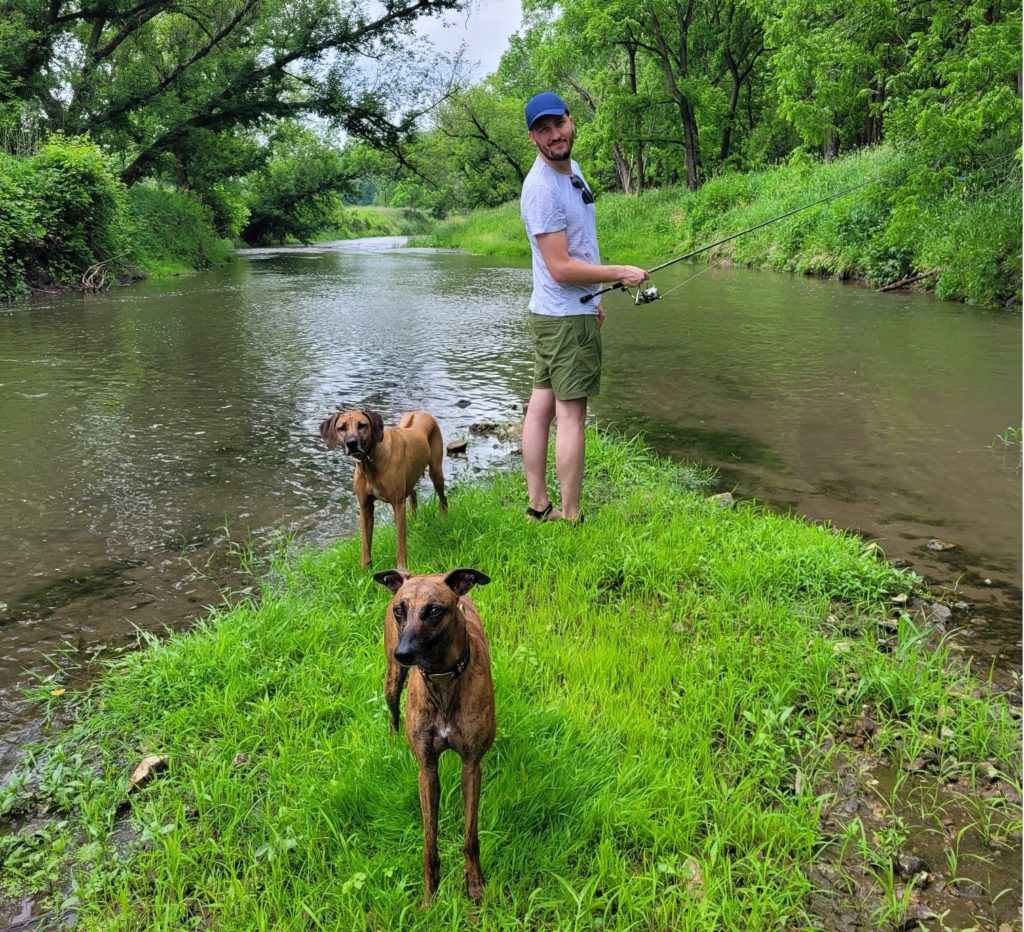
Reaching Your Puppy’s Peak Potential
If you’ve got a puppy, or are getting one soon, and envision life with a dog who can accompany you on travels and outdoor adventures, my puppy program is designed to help you achieve those goals. I help people with puppies build the skills they need to grow into a well-adjusted, confident companion both at home and out in the big wide world.
The Peak Puppy Potential Program is for dedicated people with puppies between two and four months of age who want to feel confident in raising, training and socializing a puppy who can be an enjoyable part of a fun, active life together.
In-person services are available for clients in the northwest Chicago suburbs, and virtual services are available worldwide.
Schedule a free introductory call to find out more about how the program can help your puppy reach their full potential.

